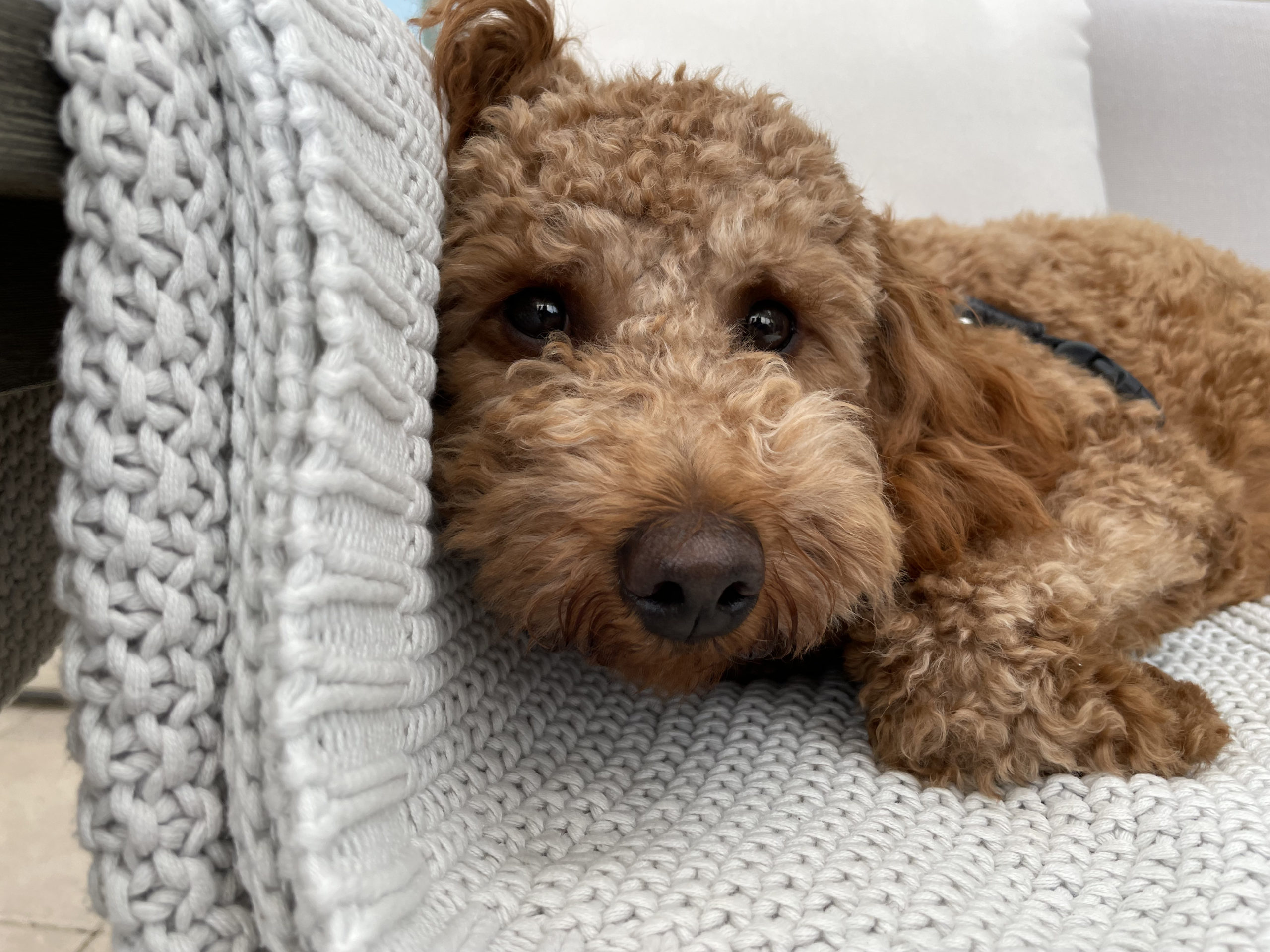Some Tips to Help an Anxious Santa Monica Doodle Stop Barking and Lunging at People
By: David Codr
Published Date: August 26, 2021
For this Santa Monica dog training session we worked with Roscoe, an 11 month-old Mini Doodle who barks and lunges at people.
Due to Covid, Roscoe did not get the socialization experience he needed when he was a young puppy. As a result he is unsure and fearful around some people. Many people mistakenly assume that when a dog is barking and lunging at someone, that they are an aggressive dog. In many cases, the dog acts that way because they are fearful, lack confidence or are insecure.
In my experience as one of LA‘s dog behavior experts, I’ve found that many fearful dogs act aggressive or tough to try to make the thing that they are afraid or anxious about go away. And because people often walk away when a dog is barking and lunging, the behavior is repeatedly validated. So the more a fearful dog barks at people and they go away, the more a fearful dog is going to continue to bark at people, it works.
To stop a dog from barking and lunging at people, you need to be able to create a positive association with that person. Many people think this involves tactile contact or petting the dog. In reality, petting is often far too close for the dog‘s comfort.
A dog behavior tip that I learned a long time ago was to reward a dog for slices or fractions of things that they are uncomfortable or disagree with in a reduced format so they dont feel fearful or anxious. Instead of trying to get a dog to meet someone all at once, rewarding them for simply looking at someone at a distance that is far enough away for the dog to feel comfortable, we can start to build a positive association.
We recruited one of Roscoe‘s neighbors to help us practice something called the engage disengage game. This is a great way to help a dog that barks at people it doesn’t know. If your dog lunges or barks at strangers, you may want to check out the free positive dog training video below, even if you are not a professional Goldendoodle dog trainer.
The crucial element of this exercise to stop a dog from barking at strangers is to make sure the dog feels comfortable. This usually involves incorportaing enough distance, slowing down the speed or lowering the volume. Earlier in the session I had spent some time with the guardian discussing consent and dog body language. The guardian will need to watch out for both when practicing this exercise.
If the guardian can recognize that the dog feels uncomfortable and increases the distance between the dog and whatever it doesn’t like, before it reacts, the dog learns over time that this human is going to provide them with a safe environment. Because the human is managing the situation, the dog doesn’t need to.
After the session, the guardian reached out to me that she used a greeting method to introduce her new dog walker but there were a number of things that occurred that set the encounter up to fail. The dog walker was not confident and it showed in her movements. Additionally she gave up when he didnt come over soon enough and started to go over to him, reaching over him while stading in front of him, facing the dog with her torso. This is pretty bad body language or technique to use with a fearful or anxious dog.
In Roscoe’s case, his guardian needs to make sure that she is there to facilitate a good introduction every time he meets someone new. Roscoe needs to be set up for success with meeting people for the first time by making sure that he is exercised in advance, the person is patient and the environment is not to stimulating or stressful.
She also needs to make sure that the person Roscoe is meeting remains passive instead of moving towards him, reaching over him or trying to engage with him. Sometimes when you’re dealing with a fearful or insecure dog, the best thing to do is give them space and time so that they can approach you when they feel comfortable.
In some cases, Roscoe may need to meet the person a few times before he warms up to them. It may take a few runs at the exercise in the video above before he is comfortable enough with the person to get close enough to pet or put a harness on. This is completely normal and should be expected in cases like Roscoe’s.
In our modern society, we are often used to quick fixes and instant gratification. But Roscoe’s dog behavior issues developed over several months, it’s going to take a little bit of time in practice to help get him back on track. While this is taking place, practice in carefully created situations that set him up for success is key.
Because his guardian is such an amazing person, I recorded a longer than normal roadmap to success summary video to help her remember all the dog behavior tips I shared in this in-home Santa Monica dog training session.
Categorized in: Dog Behavior


